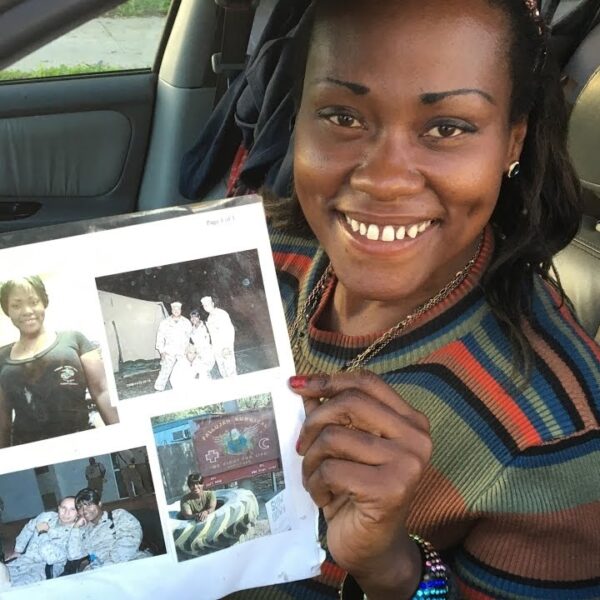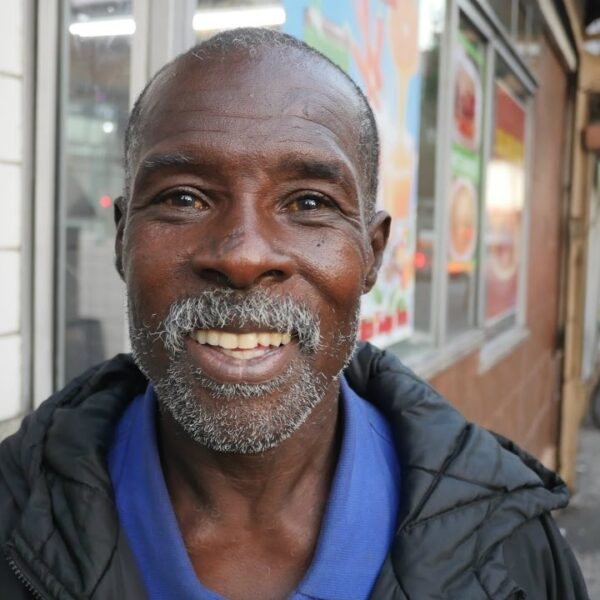The Answer: A Kinder Generation Will Inherit Our World
Growing up near Seattle, my parents took me downtown a couple times a year. We’d walk along the waterfront, browse Pike Place Market, and sometimes go to a Mariners or Seahawks game. Every time we went, there were homeless people along the pier, looking disheveled and hopeless, their eyes empty. My parents warned me not to look at them. Even though they had signs asking for money, they never said a word to us or even looked at us.
I used to wonder a lot of things when I saw those people, like what happened to them, how much money they collected, and whether it was enough to make a difference. I also wondered why I wasn’t supposed to look at them. What did my parents think would happen if I did?
Looking back at these experiences, I see how powerful messages about homeless people can potentially be to kids. My parents never told me why they didn’t want me to look at them. A lot of kids do get those explanations, though. Those explanations can cause NIMBYism to pass from one generation to the next. “The homeless want to hurt you.” “They’re unclean.” “They’ll try to sell you drugs.” This hateful list goes on and on.
Shielding Kids from Reality
Kids, of course, aren’t born with prejudice. They may be confused about why homeless people look different—shabbier, less clean, with belongings strapped to their backs or towed in a wagon—but they don’t see them as fundamentally different than themselves. Children are inherently more empathetic.
When adults see kids asking questions about homelessness, they might get uncomfortable, or even anxious. This could be because they:
- want their children to believe the world is perfect and just
- fear witnessing suffering will upset, even traumatize, kids
- believe the homeless are not deserving of empathy or understanding
- fear harm may come to their children if they get close
Regarding that last point, some parents may have had scary experiences with mentally ill or intoxicated homeless people, or may simply wish to teach their children to be safe. It’s important to teach children about boundaries and how to recognize and respond to someone who is aggressive. However, these lessons apply to everyone, not just homeless people. It’s important to emphasize to children when teaching them about safety that homelessness and aggression don’t go hand-in-hand.
For the other points, there are many who believe children should be sheltered from homelessness.
Parents teach their children to avoid homeless people for the same reasons NIMBYs don’t want homeless shelters in their neighborhoods. They assume all homeless people are dangerous, unclean, etc. They stereotype them as lazy. It could also be that they simply wish to distance themselves and pretend problems like homelessness don’t exist. These attitudes inevitably get pushed onto their kids, and result in children with the same prejudices.
Parents want their children to believe that the world is generally a good place. This sense of safety and trust builds confidence and attachment skills. However, the world isn’t that black and white. The world can be good, but it’s also deeply flawed. These flaws are all around us, and we are not doing our kids any good by allowing them to see only the positives.
Kids absorb the messages they get from their parents. If they grow up hearing people are homeless because they’re lazy, they’ll be less empathetic.
If kids hear homeless people are just like them, they’ll be better able to put themselves in others’ shoes. This leads to children who eventually start to ask not just why people are homeless, but what they can do to help.
How to Start the Conversation
So, how do you talk to kids about homelessness?
Make sure your words are compassionate. Tell kids homeless people are people, just like us, who ran into hard times. You don’t need to say more than that. If you want, you can say what caused their homelessness could happen to anyone. You can even talk about how many people are not kind to homeless people, and this makes it harder for them to get help. You’ll want to use your best judgment based on the age and maturity level of the child.
Possibly the best way you can teach children to be empathetic to homeless people is, in fact, by “exposing” them to it. As the saying goes, lead by example. Teach your kids that homeless people need our help by volunteering at a soup kitchen together. Find and participate in a program that donates care packages to homeless people. Let your kids listen to their stories. Be a good role model through your own actions and words.
If kids are older, teach them about what they have the potential to do.
Teach them to care about and support their classmates who are experiencing homelessness. Many schools have programs that fundraise for causes such as homelessness; encourage them to take part if they’re interested.
By doing these things, you’re teaching homelessness isn’t something to fear. It’s sad and unfair, and something we should all do what we can to help fix. These are simple messages that reinforce the natural empathy kids have.
These kids will become adults who support homeless shelters in their neighborhoods, advocate for fair housing prices, and envision new programs that make a true difference in homelessness rates. They may not all end up being social workers, but they will be compassionate, and that’s something desperately needed in our society.
Photo by Ben Wicks on Unsplash













